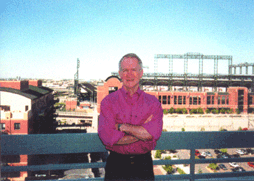The Defense Gets the Lead Out

In a significant setback to the plaintiffs' litigation campaign against former makers of lead paint, a Baltimore jury has returned a defense verdict for NL Industries and PPG Industries in the first products liability action against members of the industry to go to trial.
Tobacco plaintiffs' lawyers Peter G. Angelos, of Baltimore's Law Offices of Peter G. Angelos, and Ronald L. Motley, of Ness, Motley, Loadholt, Richardson & Poole, announced in 1999 that they would be conducting an all-out assault on all of the companies that made or used lead pigments for paint.
No Slam Dunk
But the Baltimore ruling indicated that these cases won't be slam dunks for the plaintiffs, said NL Industries' defense lawyer Donald E. Scott, of the Denver office of Chicago's Bartlit Beck Herman Palenchar & Scott LLP. "The plaintiffs' lawyers were looking for a precedent here."
But lead plaintiffs' counsel in the Baltimore case, Ted Flerlage, of the Angelos firm, warned that the industry should take little comfort from this initial victory: "We're in the beginning of what we believe will be a long future of lead litigation."
The plaintiff in Baltimore, Tyrone Parker, had charged that ingestion of paint chips from NL and PPG lead-based paint during the early 1950s had caused cognitive deficits and permanent damage to his central nervous system.
In 1953, Parker, then 2, was brought to the University of Maryland Hospital, after suffering a seizure. He was diagnosed with lead encephalopathy, in which large doses of lead cause seizures, said NL co-counsel Michael D. Jones, of the Washington, D.C., office of Chicago's Kirkland & Ellis.
The level of lead in Parker's blood was tested at 52 micrograms per deciliter of blood. The current standard for the level of concern is 10 micrograms, Flerlage said.
Treatment reduced that level, but this "lead poisoning" caused significant problems, including a learning disability.
In 1992, Parker had a seizure while driving and ran his car into a tree, leaving him with severe epilepsy. He sued PPG and NL. Parker v. NL Industries Inc., No. 97085060-CC915 (Cir. Ct., Baltimore City, Md.).
Scores of similar lawsuits were dismissed on statute-of-limitations grounds or for failure to identify the specific paint maker, Scott said. "The reason this case got to trial was that his older siblings said they remembered the brands of paint their grandfather used."
The Bartlit Beck and Kirkland & Ellis teams tackled the medical case. The attorneys for PPG, James Miller and Michael Sweeney, of Pittsburgh's Dickie, McCamey & Chilcote, contested the siblings' identification of Pittsburgh Paint, made by PPG.
At trial the defense "disputed the original diagnosis," Scott said. Although the 52-microgram reading was high, he said, "it was below the threshold of the level for causing seizures."
The plaintiff contended that the lead had set off a febrile, or fever-related, seizure. The plaintiff's lawyers used Dr. Peter Kaplan, of Johns Hopkins Bayview, as their expert witness on this theory of the case. In his cross-examination of Kaplan, Jones said, he used the witness's own publication, "Epilepsy From A to Z," against him. "In the book, he described the causes of febrile seizures," but "nowhere in the book did he mention lead."
As to the cognitive deficits, said Scott, the defense contested the relevance of studies showing a decline in intelligence in children who ate lead paint. "This doesn't necessarily mean that this person was harmed," he said. To prove this point, NL produced the school records of Parker's siblings. Parker's "grades were very bad, but not significantly worse than his two brothers who did not have lead poisoning," he said.
Parker and his wife were seeking up to $35 million in damages. But on June 12, a Baltimore jury rejected the 1953 diagnosis and found that eating lead did not cause Parker to have cognitive deficits as a child. The plaintiffs have not decided whether to appeal.
This article is reprinted with permission from the June 26, 2000 edition of the National Law Journal © 2000 NLP IP Company. All rights reserved. Further duplication without permission is prohibited.
